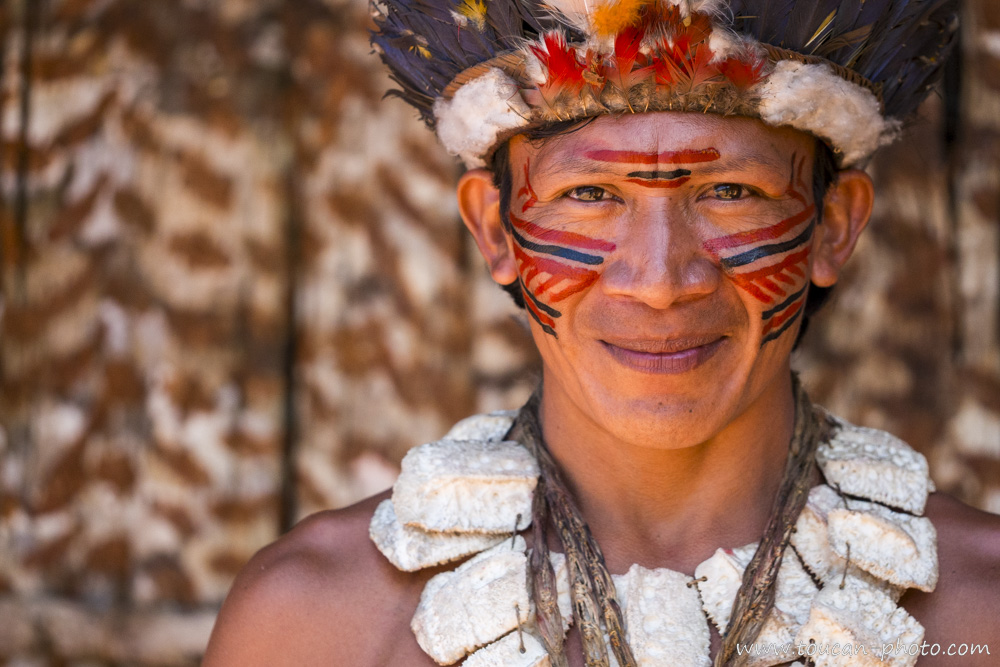
A Dessana people, Amazonia, Brazil
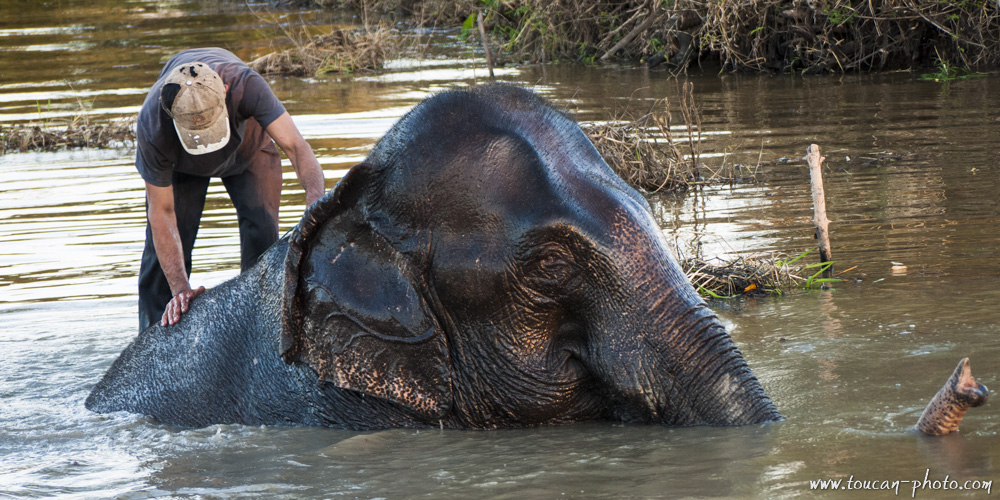 Hin giving the bath to Tombac – Laos
Hin giving the bath to Tombac – Laos
The Lao Loum (one of the 68 ethnic groups present in Laos) maintains traditional relationships with the elephants.
Each elephant belongs to an animal trainer (Cornac) and this exclusive relationship lasts most of their lives.
Here the Cornac Hin gives a bath to Tombac, a 35 years old elephant female
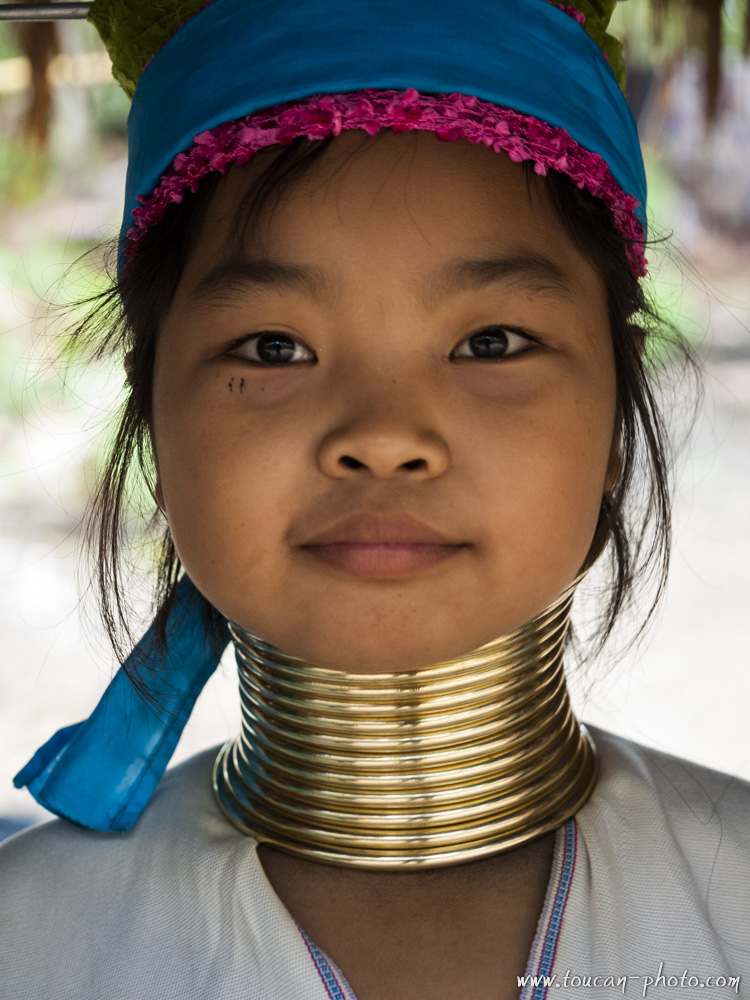 Young Padaung lady, Northern Thailand
Young Padaung lady, Northern Thailand
The Padaung (or Kayan) is a Tibeto-Burman ethnic minority of Myanmar (Burma).
In 1990, some Padaung have fled the Burmese regime and crossed the border to settle in Northern Thailand. The Padaung women are known for wearing a spiral-necklace in brass, wrapped around the neck. They start wearing the first necklace at the age of 5. It will be then replaced time after time when the girl is growing up (it is not rings that are added). This tradition gave to Padaung the nickname of “giraffe women” or “long-neck tribe”.
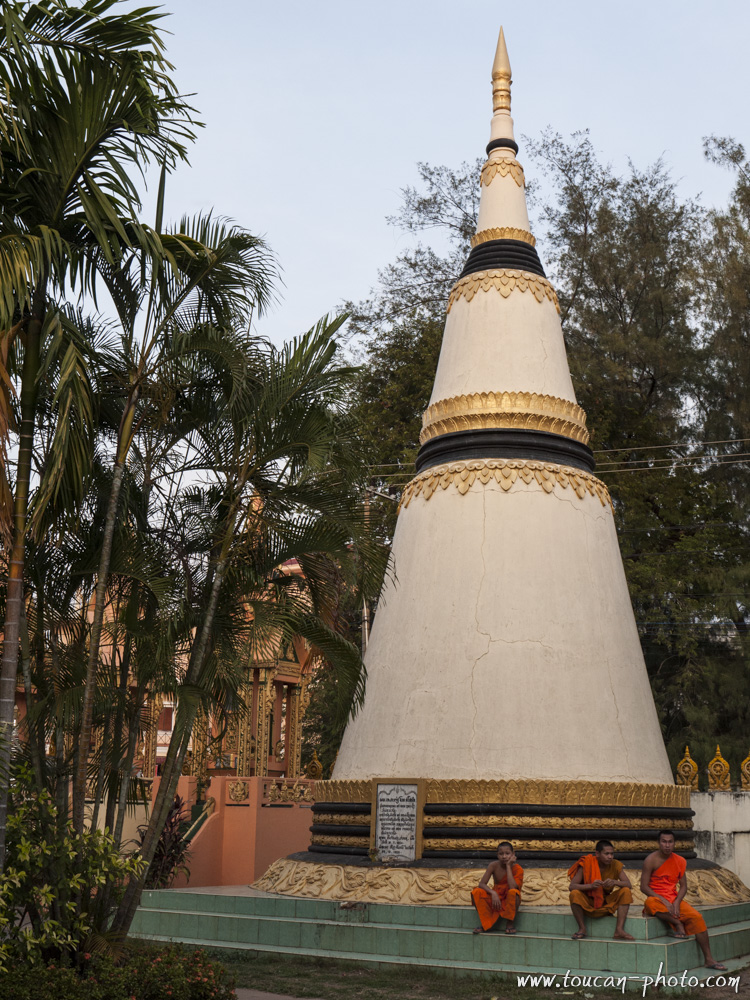 The stūpa (thât in laotian) from Wat Luang, Buddhist temple in Pakse, Laos
The stūpa (thât in laotian) from Wat Luang, Buddhist temple in Pakse, Laos
The stūpa is a Buddhist architectural structure and jaïna. Initially, a stūpa was a mausoleum containing a relic of Buddha. Today, just a few stūpa contain a relic of Buddha or an object that belonged to him. Nevertheless, they represent Buddha and remain monuments commemorating his death (the parinirvana).
The word stūpa is not known in all languages. In thai and in laotian, we call it “thât”, in Khmer “chetdei”, in Mongolian “suburghan”. In Sri Lanka, we use the term “dâgoba” to refer to this structure.
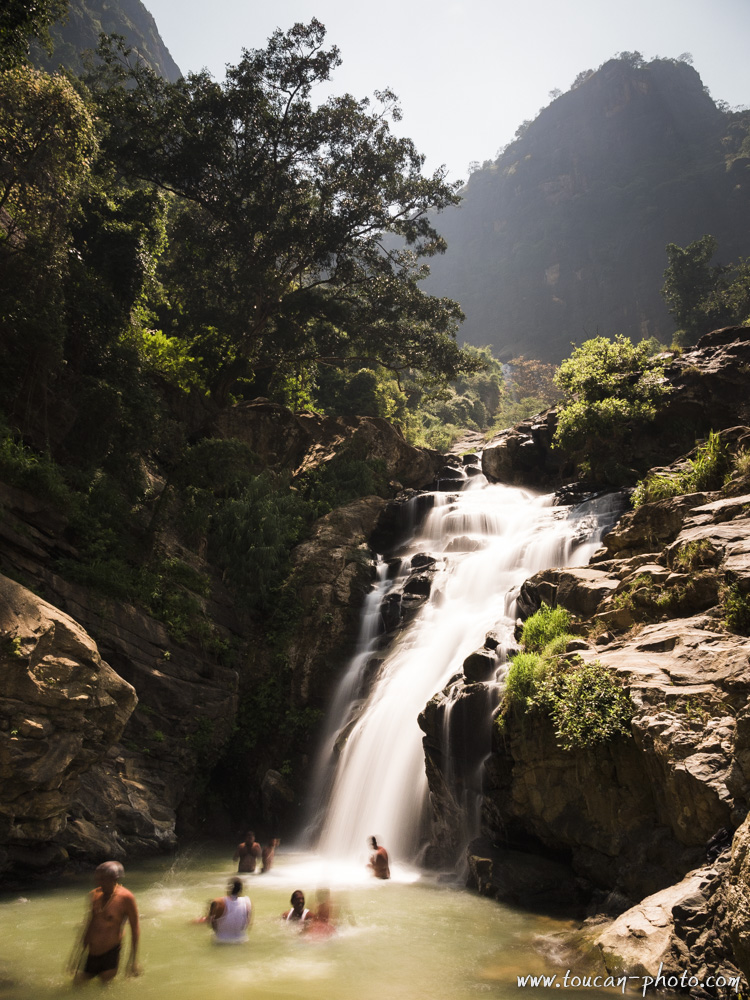 Ravana Falls – Sri Lanka
Ravana Falls – Sri Lanka
This waterfall measures approximately 25 m in height and it currently ranks as one of the widest falls in the country. The falls have been named after the legendary king Ravana, which is connected to the famous Indian epic, the Ramayana. In the Ramayana, Ravana (who was the king of Sri Lanka at the time) kidnaps Rama’s wife Sita to exact vengeance on Rama and his brother Lakshmana for having cut off the nose of his sister Shurpanakha. Ravana had hidden princess Sita in the caves behind this waterfall. At the time, the cave was surrounded with thick forests in the midst of wilderness. After a long and arduous search, Rama fights a colossal war against Ravana’s armies. In a war of powerful and magical beings, greatly destructive weaponry and battles, Rama slays Ravana in battle and liberates his wife.
It is also believed that Sita bathed in the pool at the waterfall feet. Nowadays this pool has a mystical status
 Yemrehana Krestos Church, Amhara area, Ethiopia
Yemrehana Krestos Church, Amhara area, Ethiopia
The Yemrehanna Krestos Church is an Ethipian Orthodox Church built inside a cave.
Located at the bottom of Abouna Yossef, a 4190m above sea level mountain.
The church naming is because of the king Yemrehanna Krestos who achieve to built the church during the 12th century